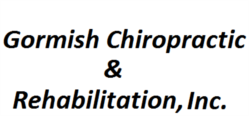Carrolltown Chiropractic Care for Cervical Spine Conditions and Related Dysphagia (swallowing trouble)
Many Carrolltown cervical spine-related pain (like neck pain, stiffness, or other degenerative cervical spine disease conditions) sufferers wonder how it might impact your swallowing ability. Dysphagia is the technical term for swallowing problems. While cervical spine conditions may affect pharyngeal swallowing function, it is valuable to understand just how and why this occurs. Let us, Gormish Chiropractic & Rehabilitation and you, look more closely at the connection between cervical spine disorders and swallowing function.
The Link Between Cervical Spine Pain and Swallowing Function
The relationship between cervical spine pain conditions and swallowing function entails both sensory and motor components. When it comes to the sensory part, pain originating in the neck can interfere with your ability to identify what’s in your mouth, resulting in difficulty knowing when to swallow which may lead to issues such as choking or coughing while eating. On the motor side of things, cervical spine pain conditions might also interfere with your ability to process food as it goes through your mouth and throat by disrupting normal tongue, jaw, and hyolaryngeal movements (the movement of the hyoid bone, the bone that holds the tongue). Therefore, there may be trouble clearing food debris from your mouth after each bite or sip. Additionally, cervical spine disorder has been linked to increased risk of aspiration (inhaling food particles) due to reduced laryngeal elevation that normally occurs during swallowing. (1) Gormish Chiropractic & Rehabilitation wants our Carrolltown cervical spine pain patients to be aware of such issues.
The Importance of Proper Treatment
The ability to swallow impacts your quality of life. A variety of diseases and spinal conditions may be the root cause of the swallowing trouble. Researchers are fine-tuning their evaluation of patients with swallowing issues. (2) A recent study documented that, fortunately for these patients, those who have spine-associated dysphagia had better outcomes with treatment than those whose dysphagia was related to other issues. (1) As a matter of fact, a case report of a female patient who had both dysphagia and cervical osteophytes, cervical kyphosis, and thoracolumar scoliosis was treated for 6 months with chiropractic and reported relief of all issues including dyspagia. (3) In order for individuals with cervical spine disorder-related dysphagia to again experience safe eating habits, proper treatment is important. Treatment at Gormish Chiropractic & Rehabilitation typically starts with a thorough examination to determine the underlying cervical spine issue followed by a treatment plan including gentle spinal manipulation care (often in the form of Cox® Technic) and exercises meant to increase strength and range of motion in the neck muscles as well as strategies for swallowing safety when eating. Electrical stimulation has been found helpful in targeting specific areas of weakness related to impaired tongue motion or jaw closure while also promoting increased blood flow throughout the neck region. (4,5) Gormish Chiropractic & Rehabilitation offers research based and clinically experienced relieving treatment modalities along with chiropractic spinal manipulation.
CONTACT Gormish Chiropractic & Rehabilitation
Listen to this PODCAST with Dr. Adam Propper on The Back Doctors Podcast with Dr. Michael Johnson as he describes relieving treatment of neck pain using The Cox Technic System of Spinal Pain Management.
There may not be a quick fix for this problem—treatment typically takes several weeks—with patience and commitment you can get the results you want with personalized care tailored specifically for your needs. Schedule your Carrolltown chiropractic appointment today.
